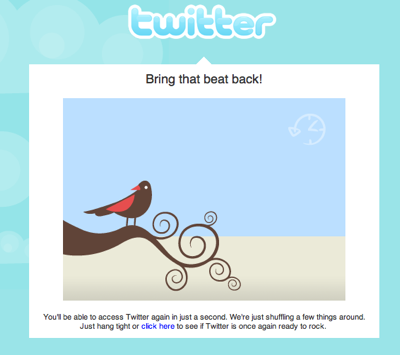I am, of course, old enough to be nostalgic for the good old days when things lasted. Sure, they'd break, but that's when you had them repaired - because you weren't going to just toss away something that still had some life in it - especially given that the the cost of repairing something was so much less than the cost of replacing it.
Most of the time these days, there's nothing you can do with broken stuff except replace it (and get indignant),
So you might think I'd be pleasantly surprised to find out that for only $298 I can ship my laptop to HP and, within 7-9 days, get it repaired.
I'm not.
I'm annoyed - annoyed that problem I'm having appears to be a fairly widespread one that points to a poorly manufactured component.
Here's my story:
A few months ago, I began to notice that the power jack on my HP Pavilion ze2000 was really heating up - too hot to touch - and that the power supply was flipping back and forth between AC and battery. Not to mention that the battery was draining like a bathtub that had just been Drano'd.
Since I have two power adapters, and two batteries, I tried all possible combinations.
No go.
The problem persisted.
Oh, if I wiggled and jiggled things, or, as I'm now doing, propped the connector up with my wallet, I can get it to stay on AC for a while at a time, but it still heats up. Burna, burna, as my mother used to say when a kid got near the stove.
I'm also seeing - or perceiving - performance degradations.
Time to shop around, of course.
But I thought I'd check out what HP had to say on their support site, which was mostly nothing more than I'd already done (take things out, put things in, turn things off, swap things out); and something that I wasn't going to do because it sounded like too much hassle, not to mention nonsense: reload the OS. (Say what?)
I asked a techie friend what he thought about the problem and he told me that info on the hotta, hotta HP laptop jacks had been burning up the blogosphere for a couple of years, and that there were class action suits about the problem.
Well, Eric was right. There is plenty of noise out there about the jack problem. And HP has certainly not acknowledged that there is one.
So I thought I'd give their live, on-line help a shout, and got to "talk" to "Kinsey" who, after a pleasantry or two, asked me to proceed with my "enquiry."
Which I did:
Here's a snippet of our exchange:
Maureen Rogers: I am experiencing power jack problems - the power is not stable, flickering back and forth between battery and AC.
Maureen Rogers: It's not the adapter - I have two. Nor the battery -ditto.
Kinsey: I regret for the inconvenience cause to you by this, need not to worry I will help you in this regard.
Maureen Rogers: I understand from the web that this is a persistent HP laptop problem. Are you doing anything about it - I couldn't see anything other than generic instructions on your support site.
Kinsey: Maureen, the issue will be caused by the usage of the Notebook.
Usage of the Notebook.
I really liked hearing that.
I then found out about the $298, and that HP would send me the packaging materials FedEx, and I'd get the laptop fixed and back in 7 to 9 days.
But I don't want to spend $298 that I could put towards a newer laptop - with more processing power (although also with Vista - ugh) - fixing something that really strikes me as not all that likely to be related to my personal usage. And even if it were my usage, do I really want to go without my laptop for nearly two weeks? (Even though I do have my trusty old Dell that's really only got one problem: the PCMIA slot got busted when I dropped the laptop with the card in it, so I can't use wireless - only ethernet - to connect.)
I pointed out to my friend Kinsey that I have used laptops for years - HP, Dell, Toshiba - and that I have never had a problem with burned out connectors until just now. I suggested that there might be a quality problem.
To which my friend Kinsey replied:
Kinsey: Is there anything else I can assist you with today?
And then - was it something I texted? was it a power flicker that ended our connection? - Kinsey was gone.
Which was fine.
He/she's not setting HP policy here, but it seems to me that one or two things is true.
Either HP is wrong, and they do have a poorly designed or manufactured component, which they should fix for free. Or give us coupons for purchasing a new laptop.
Or HP is right, and this is just a usage problem.And as for the untold thousands out there with flaming jacks, well, it's because we just wore them out, or don't connect things properly to begin with, or whatever. And, well, we ought to just shut up, rather than blathering all over the blogosphere and riling people up. But with all the talk out there, you'd think HP could at least put something on their support site about "rumors" about the HP laptop jack problem, and how their investigation has proven that they are not at fault, or whatever way they want to spin it. (If it's there, I sure didn't find it.)
Absent this, HP will not be on my list for this weekend's new laptop purchase.
Any suggestions? (And no, I'm not yet psychologically prepared to get a Mac.)


